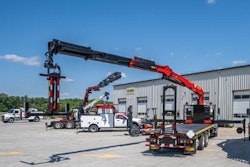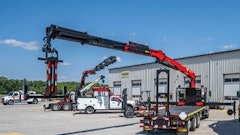
Injuries can disrupt jobsite momentum — pulling workers off projects, delaying timelines and putting pressure on margins. Research shows that employees who experience traumatic workplace injuries have higher rates of anxiety, depression and mental health concerns compared to those injured outside of work.
Individuals who display early risk indicators — such as chronic pain or psychosocial challenges — can face a more complicated recovery. Insurance claims involving these factors often stay open twice as long and cost up to 2.5 times more than standard claims. The good news is that employers who help manage those risk factors can help promote faster recovery and lower costs.
Compassion and Coordination Improve Outcomes
Jean Feldman, Sentry's director of managed care and a registered nurse, emphasizes the importance of empathy, collaboration and early intervention in helping injured workers recover.
“Many injured workers face more than physical pain,” she says. “They also face emotional stress and financial uncertainty. That has a real, measurable impact on their recovery"
Construction leaders play a critical role in supporting recovery. Structured return-to-work (RTW) programs that address both the physical and mental aspects of injury can accelerate healing, reduce costs and improve employee loyalty and retention.
A Smart Business Strategy
Supporting injured workers isn’t just the right thing to do — it’s also smart business. An effective RTW program can:
- Reduce claim cost and duration
- Improve team morale and engagement
- Protect productivity and project schedules
- Lower the frequency of lawsuits tied to on-the-job injuries
Start with Whole-Person Recovery
“Most employees don’t expect to be injured at work,” Feldman says. “When they are, their first thoughts often include anxiety and stress about their paycheck, how they will recover, and whether they will lose their job.”
Physical injuries at work nearly always trigger mental health concerns, especially if pain disrupts sleep or workers feel isolated during recovery. Jobs that require repetitive lifting or physical labor — like construction and manufacturing — can be particularly challenging.
To support recovery, consider:
- Create clear policy statements: Set expectations for whole-person recovery. Share these with your insurer, including interest in early identification of psychosocial risks, such as fear or stress, that may delay recovery.
- Normalize early, consistent contact: Reach out to injured workers within 24 hours, and shift from “what happened” to “how are you doing.”
“This shift leads with compassion and provides space for employees to share real concerns, whether about pain, childcare, a missed milestone, or fear of returning to work,” Feldman says.
- Maintain consistent communication: Schedule weekly check-ins using phone, text, email or a combination depending upon the employee’s preference. Clarify steps and points of contact for their care and recovery.
- Empathetic scripting: Provide scripts for initial outreach and recovery conversations. Encourage open feedback on what’s working, what isn’t, and where they may need help.
Design An Effective Return-to-Work Program
Feldman says returning to work can be a meaningful milestone, but it isn’t the final step. New challenges often emerge around confidence, physical capability and performance expectations.
A strong RTW program should include:
- A dedicated RTW coordinator (often HR or safety staff)
- A published RTW policy
- Clear eligibility and milestone definitions
- Coordination between insurers and care providers
- Outcome tracking (Time-to-RTW, re-injury rates)
Maintain A List of Light-Duty Tasks
Help workers stay engaged with safe, productive tasks. Ask them to:
- Conduct jobsite inventories
- Inspect tools and equipment, and update maintenance logs
- Mentor apprentices or lead toolbox talks
- Support important documentation (punch lists) and vendor coordination
Use Your Insurer’s Data to Catch Risks Early
Ask your insurer about data they have that can help you identify complex claims before costs escalate. Ask your insurer or broker:
- How do you identify employees who are at risk for delayed recovery?
- What interventions are available at 30, 60, and 90 days if needed?
- Do you offer behavioral health support without requiring a formal diagnosis?
- What guardrails exist to limit unnecessary opioid prescriptions?
- What reporting do you provide for site-level outcomes?
Ask your insurer to provide reporting scorecards that compare your jobsites to similar jobsites in the region so you can better understand your company’s performance and risks. Work with your insurer to follow your state’s workers’ compensation rules and regulations.
Lead with Empathy — And Measure Impact
Feldman says most workers’ compensation claims are legitimate. Treat employees how you would want to be treated: with empathy, transparency, and consistency.
- Train leaders on how to deliver supportive communication
- Standardize first calls and RTW meetings for injured workers
- Welcome employees back and celebrate progress as they recover
- Use pulse check-ins to assess recovery experience
Remove Common Roadblocks
Identify and address these early barriers to recovery:
- Opioid prescriptions. Flag after first fill for pharmacy review
- Surgical delays. Encourage early second opinions
- Reconditioning gaps. Work with the care team to link therapy goals to job tasks
- RTW anxiety. Use phased schedules to rebuild on-the-job confidence
- Process confusion. Provide a one-page roadmap to help clarify the details and process an injured worker will face
- Legal escalation. Maintain contact and document all support efforts to help prevent injury claims from becoming lawsuits, and be mindful of the need for attorney representation if appropriate.
Case Example: A Smoother Return for A Framing Lead
Imagine a framing crew leader who injures their shoulder while setting trusses. The supervisor calls that day to check in, explain the next steps, and offer support and set the tone. The call helps the employee feel supported and informed. Within a week, the insurer flags the case as complex due to anxiety about reinjury. A nurse case manager joins the team. The employee starts light-duty work — inspections, safety talks, mentoring — and returns to full duty within seven weeks.
The result? A retained leader, a faster recovery, and a lower-cost claim.
Make Recovery Part of the Operating Rhythm
Integrate recovery strategies into daily business operations to help create a culture of empathy, and whole-person care.
- Planning: Identify light-duty options before a project begins.
- Safety culture: Use each incident as a learning opportunity.
- Performance reviews. Track RTW metrics by division.
- Carrier oversight. Hold insurers and clinics to shared KPIs.
- Internal communication. Share success stories (with permission) to build awareness.
What to Put in Motion ASAP
Enhance your program with these steps:
- Assign an RTW program lead
- Publish a one-page RTW policy
- Build a task library for modified duty
- Define case escalation triggers (i.e., 30/60/90 days, opioid usage, and/or complex medications)
- Align with insurer on modeling, mental health, and reporting
- Train field supervisors using recovery scripts
- Review RTW and claims metrics quarterly
Turning Recovery into Business Strength
Strengthen recovery outcomes by supporting the whole person—starting with early outreach, flexible RTW options, and proactive coordination with your insurer. These steps can reduce claim duration, lower costs, and improve employee retention.
Connect with your claims representatives and local safety experts to review your recovery and return-to-work procedures for a comprehensive approach — and to build a more resilient workforce.




















